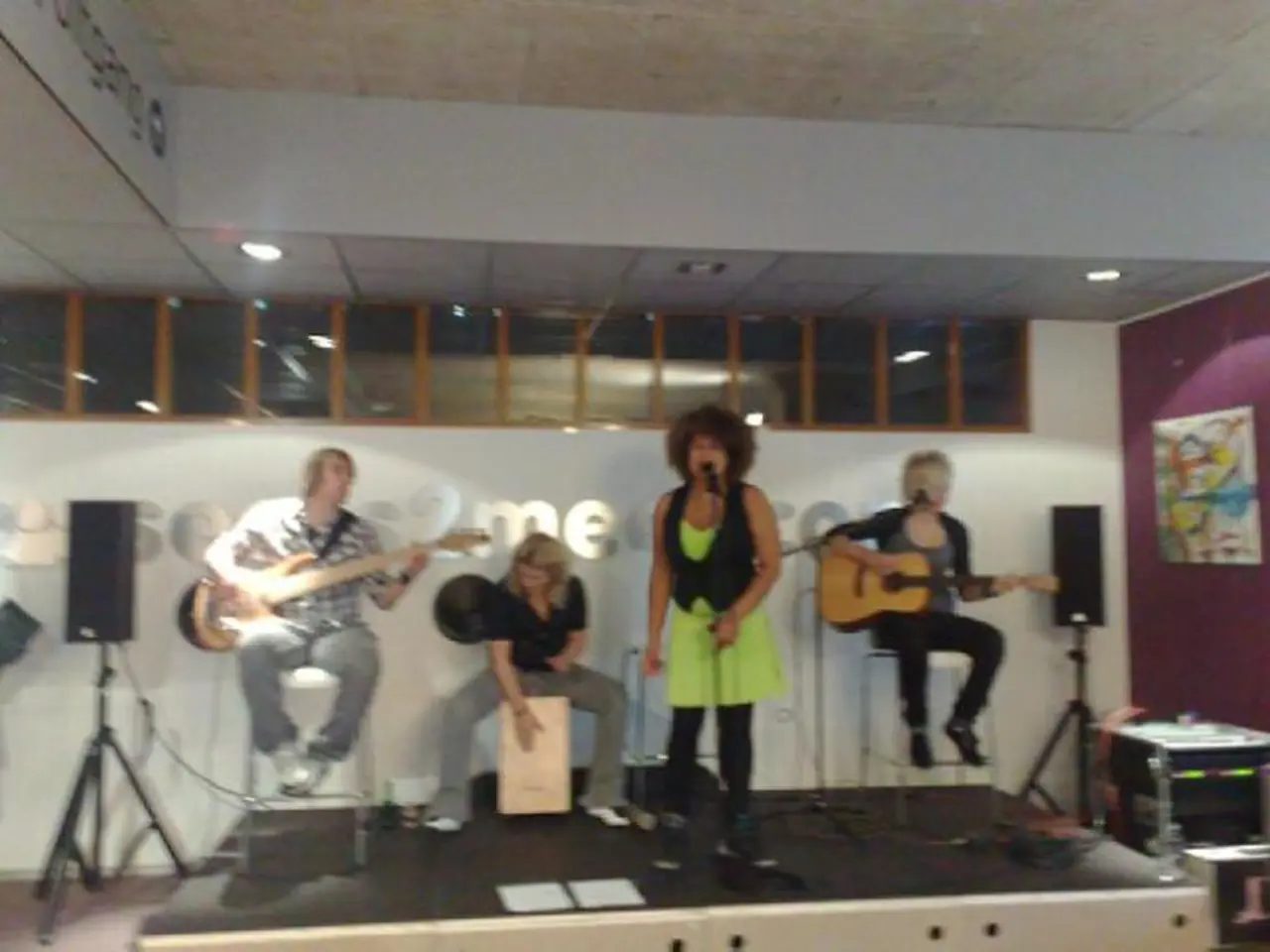Decoding the Puzzle: Quantifying Speaker Count in a 5.1 Surround Sound System
In the realm of home entertainment, a 5.1 surround sound system stands out as a popular choice for immersing oneself in movies, music, and gaming. This setup consists of six speakers: Front Left, Front Right, Center, Surround Left, Surround Right, and Subwoofer.
The Front Left and Right Speakers, positioned at an angle of about 30 degrees from the seating area, ideally at ear level when seated, create a stereo sound field. They are crucial for music playback and providing dimension to sound effects. The Center Channel Speaker, directly aligned with the television or screen, delivers dialogue and other central sounds, anchoring audio in the center and ensuring voices and primary audio elements appear to come from the on-screen action.
The Surround Left and Surround Right Speakers, placed above ear level, approximately 2-3 feet above the listening position and angled towards the center of the room, create a three-dimensional sound stage. They deliver ambient sounds and effects, making the listener feel enveloped by the environment.
The Subwoofer, the .1 in the 5.1 setup, handles low-frequency sounds such as rumbles, explosions, and musical bass notes. Its placement is somewhat flexible, but locating it near a wall or corner can enhance the bass response.
A receiver is essential for a 5.1 speaker setup, as it connects all audio components and decodes signals for distribution. When it comes to the subwoofer, one can choose between a powered subwoofer (active) with its own amplifier or a passive subwoofer that requires an external amplifier.
For optimal sound quality, speakers with a range of at least 20Hz to 20kHz can reproduce full-spectrum audio. A speaker rating of 85dB or higher is typically recommended for home theatres for efficient power-to-sound conversion.
Mixing different brands of speakers in a 5.1 setup may result in an inconsistent audio experience. Proper positioning and calibration of the speakers are essential to maximize the immersive sound environment that these six components create.
For those seeking an even more enhanced audio experience, a 7.1 surround sound system includes all the elements of a 5.1 setup but adds two more speakers known as the rear surround speakers, offering enhanced audio depth and directionality.
In conclusion, a 5.1 surround sound system offers a detailed, immersive sound environment that enhances movies, music, and gaming by reproducing sounds realistically in a three-dimensional space around the listener. With careful speaker placement, selection, and calibration, one can create a home theatre experience that rivals the cinema.
- The fitment of a 7.1 surround sound system extends the immersive capabilities of a 5.1 system, incorporating two additional speakers for better sound depth and directionality.
- To achieve the highest sound quality, focus on speakers equipped with a frequency range of at least 20Hz to 20kHz, ensuring full-spectrum audio reproduction.
- By placing the Surround Left and Surround Right Speakers above ear level, around 2-3 feet above the listening position, and angled toward the center of the room, a more natural, three-dimensional sound stage can be created.
- Decorating your home and garden can be merged with enhancing your lifestyle, as a well-designed home theater equipped with gadgets and technology can serve as both an aesthetic addition and an practical improvement to overall enjoyment.
- Traveling offers opportunities to engage with different fashion, food, and beauty trends, as well as enjoy entertainment and sports experiences that differ from those accessible at home.





